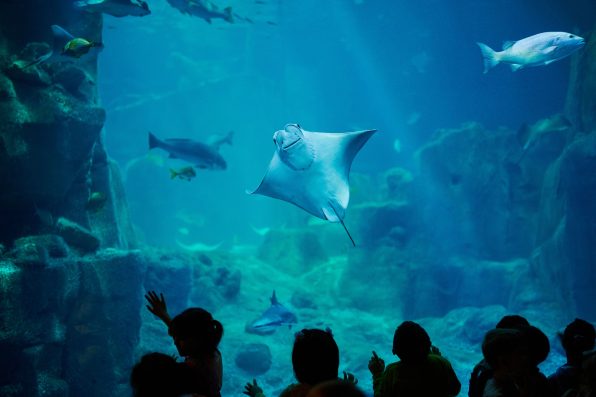A Stingray Housed In A Tank Without A Male Companion At A North Carolina Aquarium Has Mysteriously Gotten Pregnant, Leading People To Speculate That A Shark May Be The Father

A stingray that lives in a small aquarium in Hendersonville, North Carolina, has become pregnant, shocking the aquarium staff.
Why? Charlotte, the round stingray, has been swimming in the tank at the Aquarium and Shark Lab without a male ray companion for at least eight years. Yet, she is due to have up to four pups.
Charlotte is believed to be between 12 and 16-years-old. One day, some strange growths started swelling on her body.
Brenda Ramer, executive director of the Aquarium and Shark Lab, which is run by the nonprofit Team ECCO, had initially thought the growths might indicate cancer or overeating. But, after the staff conducted an ultrasound exam on her, they discovered eggs. The aquarium veterinarian, Dr. Rob Jones, confirmed that the growths were eggs.
Charlotte’s mysterious pregnancy has become a popular topic of conversation online. Many people speculate that she may have been impregnated by one of the male sharks that share her space.
Since July 2023, Charlotte had been inhabiting the tank with Larry and Moe, two male white-spotted bamboo sharks. Bite marks were detected on Charlotte, which are signs of shark mating.
However, experts have debunked the theory. According to Kady Lyons, a research scientist at the Georgia Aquarium in Atlanta, the creation of shark-ray babies is impossible because the anatomy and DNA of the two species are not compatible.
There is another, more feasible explanation for Charlotte’s pregnancy, though. It is much more likely that she impregnated herself through a phenomenon called parthenogenesis, a rare form of reproduction where a female produces an embryo without fertilization by a male.
During this process, a smaller cell, known as the “polar body,” fuses with the egg. The offspring are not exact clones of the mother. Rather, they are similar to the mother but less genetically diverse because the egg and the polar cell contain only portions of the mother’s genome.

PixieMe – stock.adobe.com – illustrative purposes only, not the actual stingray or people
More than 80 vertebrate species, including a crocodile and California condors, have been found to be able to reproduce on their own.
In addition, a variety of species of sharks and stingrays are capable of parthenogenesis, particularly in captivity. For instance, the first known case of parthenogenesis in a hammerhead shark occurred in 2001.
Although parthenogenesis is common among this group of animals, it has never been seen before in Charlotte’s species, the round stingray. Still, the theory makes more sense than impregnation by a shark.
Charlotte is expected to give birth soon. She will be moved to a bigger tank equipped with live cameras for observation of the newborn stingrays.
Sign up for Chip Chick’s newsletter and get stories like this delivered to your inbox.
More About:Animals





